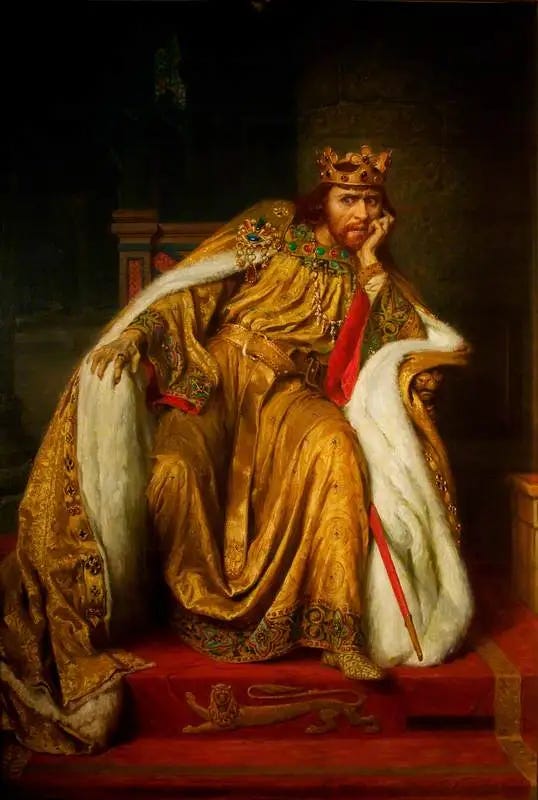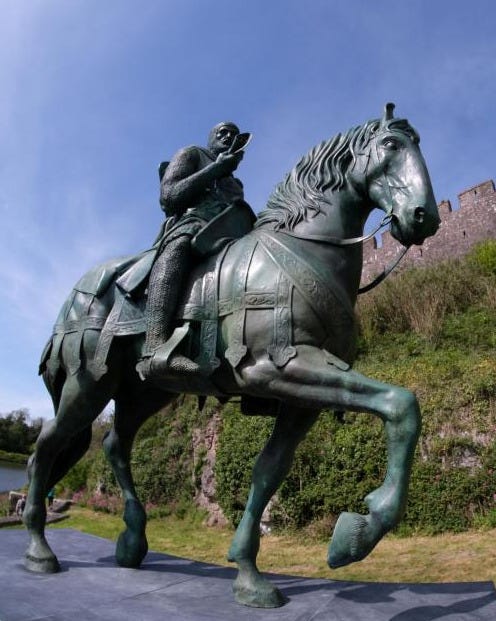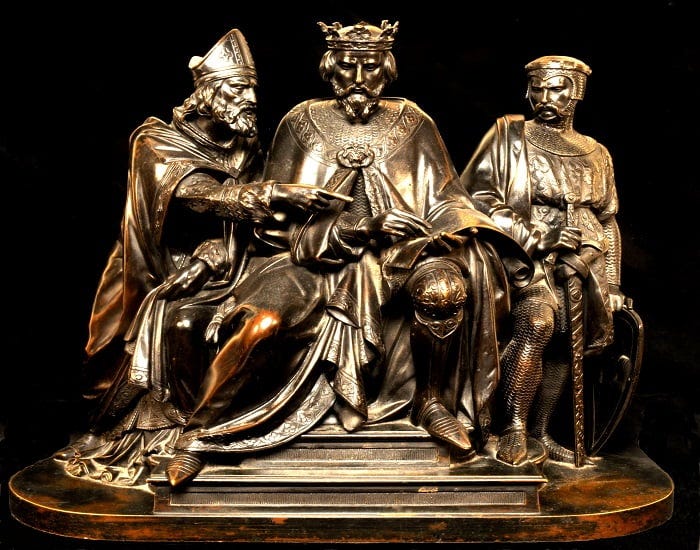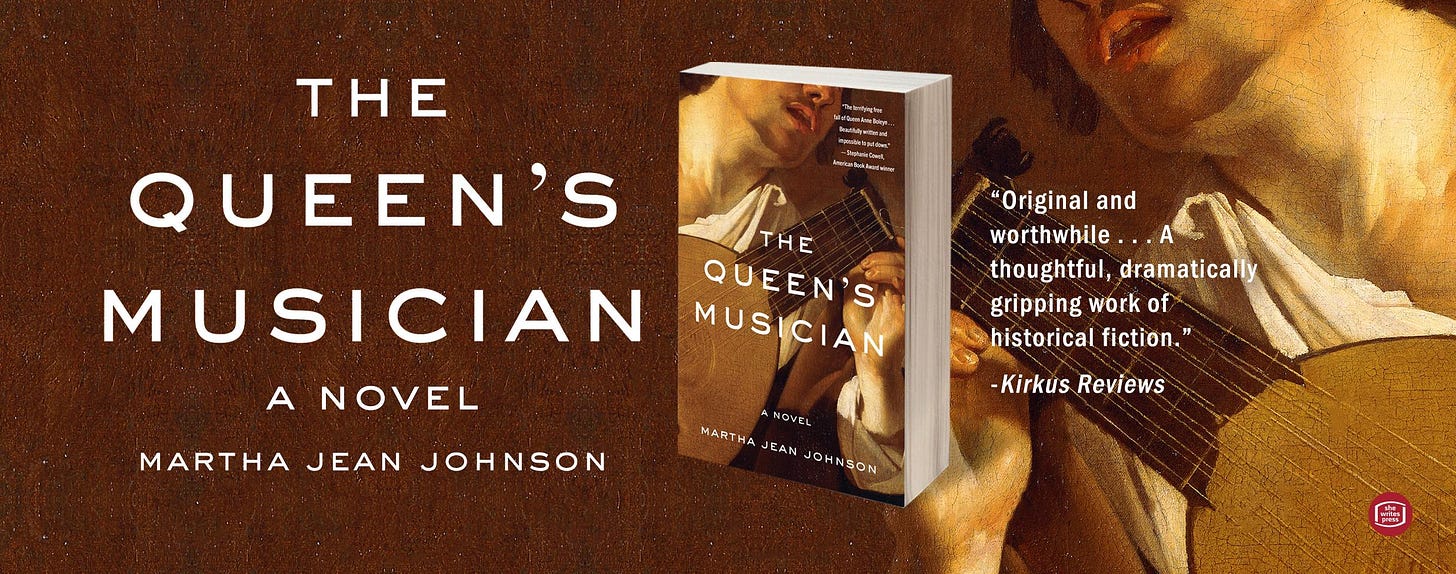A Young Girl Weds an Infamous King
Behold the Bird in Flight—a lush, nuanced novel set in the English Middle Ages
Before the Tudors, there were the Plantagenets, who ruled England from 1154 to 1485. Fourteen kings and nonstop mayhem. Still, the Plantagenets haven’t quite entered the popular imagination the way the Tudors have.
Richard the Lionheart (Richard I) used to be popular, but with our evolving views on the Crusades, we’re just not into him these days. Shakespeare gave us indelible portraits of Richard II and Richard III, and actors still line up to play these roles. Bridgerton’s Jonathan Bailey recently played Richard II in London’s West End. I mention this so I can include a picture.
Shakespeare also wrote a King John, though it’s not performed much today. Most of us know John because he was forced to sign the Magna Carta, and he’s the villain in Robin Hood and Ivanhoe. The SparkNotes guide for Ivanhoe describes him as “power-hungry and greedy” and “a weak and uninspiring ruler.” He was Richard the Lionheart’s younger brother.
Author Terri Lewis ventures into this tumultuous epoch with her new historical fiction, Behold the Bird in Flight. The plot revolves around Isabelle of Angoulême who married King John at twelve, though the bride’s age wasn’t particularly shocking at the time. Medieval canon law permitted girls to marry at twelve and boys at fourteen.
Kirkus Reviews calls Bird in Flight a “wholly engaging bildungsroman [that] doubles as a riveting piece of historical fiction.” Yes, it is. Here’s what kept me turning the pages:
The heroine
The adolescent Isabelle grows into womanhood as the plot advances, and her changing voice reeled me in. In the opening chapters, she has the cocky effervescence of a likeable “tween.” Later, she speaks in bittersweet tones of a sadder, more realistic queen. And Lewis spins it out so naturally.
A love triangle that includes King John
Countless novels and films rely on love triangles for tension. It’s an inherently unstable situation. But not all include an infamous ruler as one of the parties. In this case, Isabelle and her young swain, Hugh of Lusignan, are on the verge of marriage when King John arrives and decides he’d like the lovely bride for himself. Hugh has the looks, but John offers the crown. Isabelle wavers, and the tale begins.
A multi-layered villain
Depicting baddies can be a lot of fun, but Lewis takes a more subtle path. She suggests John’s personality by letting readers eavesdrop on his thinking. The thirty-three-year-old monarch is smitten with the beautiful Isabelle, and he’s neither loutish nor unsophisticated. He admires “women who can speak well," and rolls out a few smooth courting moves. Later on, as Isabelle’s husband, he’s suspicious about her fidelity, but then he has every reason to be.

An inside look at John’s declining fortunes
The novel presents John’s dicey political circumstances in human and personal terms. No big history dump here. Instead we inhibit this king’s mind as he struggles to rule:
John is already knee deep in kingly problems when he enters France where he will meet Isabelle: “He glanced back at his retinue, a trail of grumbling squires, household knights, and a handful of whispering barons, the latter a major worry. Also wives, money, wars, heirs . . . .”
Fiction often paints John as rapacious and grasping, but Lewis allows him to explain his shaky finances: “But there was never enough. Empty coffers haunted his dreams. Damn his brother and his Crusade . . . Had his brother stayed in the kingdom where he belonged, the wealth would have remained in England . . . .”
Rebellion, repression, and nearly constant war with France dominated John’s reign, and this novel shows his fear and paranoia. But to quote Woody Allen: “Just because you’re paranoid doesn’t mean they aren’t out to get you.” Plenty of people wanted him dead.
An honorable man
One of the novel’s most appealing characters is William Marshal, the king’s loyal knight and advisor. He’s older, with gnawing pain in his legs, but he’s also strong and impressive, a man of courtesy, and moderation. Marshal helps Isabelle when John’s jealousy endangers her. He also stands by his king and prevents John from acting on his own worst instincts. I was quite drawn to this real life historical figure.

Scenes that lodge in your mind
The novel features a number of haunting scenes, but my favorite is when Queen Isabelle encounters her old love, Hugh, as a captured enemy fighter. He has been seriously wounded in battle and taken hostage by King John. Execution is a possibility. Hugh is barely conscious, and Isabelle must dissemble to save his life. These pages are dreamlike, aching with lost love and desperation.
Words to savor
Lewis’s passion for words and nature is evident. Here’s an early picture of Isabelle’s young love: “Hugh had dreamed of soaring like a peregrine, swooping over the river that cradled the castle and out across the fields, sun’s glint on his feathers, the world spinning below.” And here’s Isabelle in a life-changing moment: “Sea spilled into the sky, water tinged with green, clouds with blue. Far out a flock of birds bobbed, along the sand a bristle of weeds. Isabelle stood on the broad beach near Gosport and dreamed, her mind soft, fluid, stretching in all directions.” Such elegant, seductive images.
This book stirred my curiosity
I’ve written several posts on the relationship between historical novels and history, and you can read my take on how far writers should stretch the truth in this recent Writer’s Digest article. But one of historical fiction’s most powerful effects is that it sparks your curiosity about what really happened.

King John met with his defiant barons and signed the Magna Carta some eight hundred years ago this month—on June 15, 1215 at Runnymede. Having just read Behold the Bird in Flight, I’m eager to learn more about that centuries old agreement—what it meant then and what it means now. How do we protect individual rights against the abuse of power? It’s still a question today.
Your turn now. What do you remember about the infamous King John—from school, in novels, in film? Did your history teachers emphasize the Magna Carta?
A glamorous queen, a volatile king, a gifted musician concealing a forbidden romance. Everyone knows Anne Boleyn’s story. No one knows Mark Smeaton’s.
Open Letters Review
"Superb writing and soulful characterization . . . The Queen’s Musician offers a gripping tale for Tudor fans and newcomers alike."
Historical Novel Society
“We know how it ends, but the journey is hopeful, bittersweet, and utterly heartbreaking. Highly recommended for anyone who loves Tudor history or anyone who, like me, enjoys being completely destroyed by a story.”
Five Stars from Readers’ Favorite
“In one of the most savage moments in history . . . a heartfelt and thoughtful tale of the fragility of love. Very highly recommended.”
Five Stars from Whispering Stories
“The background research necessary to weave together fact and fiction has been extremely well done . . . The scene-setting was excellent.”
BookLife
“Little is known about Mark Smeaton beyond his tragic fate. Yet Johnson imbues him with depth and dignity, transforming a historical footnote into a fully realized character whose story lingers long after the final page.”
Helene Harrison, Tudor Blogger
“A brilliant book which captures the uncertainty and fear of the late 1520s and 1530s . . . an emotional story told very skillfully.”
Stephanie Cowell, author of The Boy in the Rain and Claude & Camille
“In the terrifying free fall of Queen Anne Boleyn . . . innocent men will be condemned. . . . Beautifully written and impossible to put down. I had tears in my eyes.”
Claire Ridgway, author of The Fall of Anne Boleyn: A Countdown
"A captivating and deeply moving retelling of Anne Boleyn’s dramatic fall . . . This beautifully written novel brings history to life with such emotional depth that it brought me to tears."
JERSEY CITY FRIENDS AND NEIGHBORS
You can pick up a copy of The Queen’s Musician at our beautiful local bookstore, WORD at Hamilton Park. And we’ll talking about the novel and all things Tudor come August 16. Please join us if you can.








Your review piqued my curiosity and I find I may have to get this book. I am rabid for anything on the Tudor Dynasty and your book, of course, is on my list. Thanks for bringing to my attention that even these historical novels are quite intriguing. They are the foundational bricks that founded our beloved Tudors.
Excellent writing! Thank you for enlightening us with this story!
And, enhorabuena for your book. It is real page-turner!